27 may 2022, Oscar van Gelderen
The gallery of... Carla and Paul Wilms
In the section 'The gallery of' we talk to a host of gallerists from the Netherlands and Belgium: when and how did they start their gallery, what has changed in the art world since, what is their profile, what do they collect themselves, and what has been the impact of the pandemic on their gallery? In this part: Carla and Paul Wilms (Galerie Wilms).
Were you exposed to art while growing up?
In the families we were born into, there was little or no attention for visual art. If art was discussed at all, it was certainly not modern or contemporary art. That was a bridge too far. It took a while before our parents understood what we were doing. It is therefore extra nice to see that various friends and family have secretly become more and more interested in art in recent years.
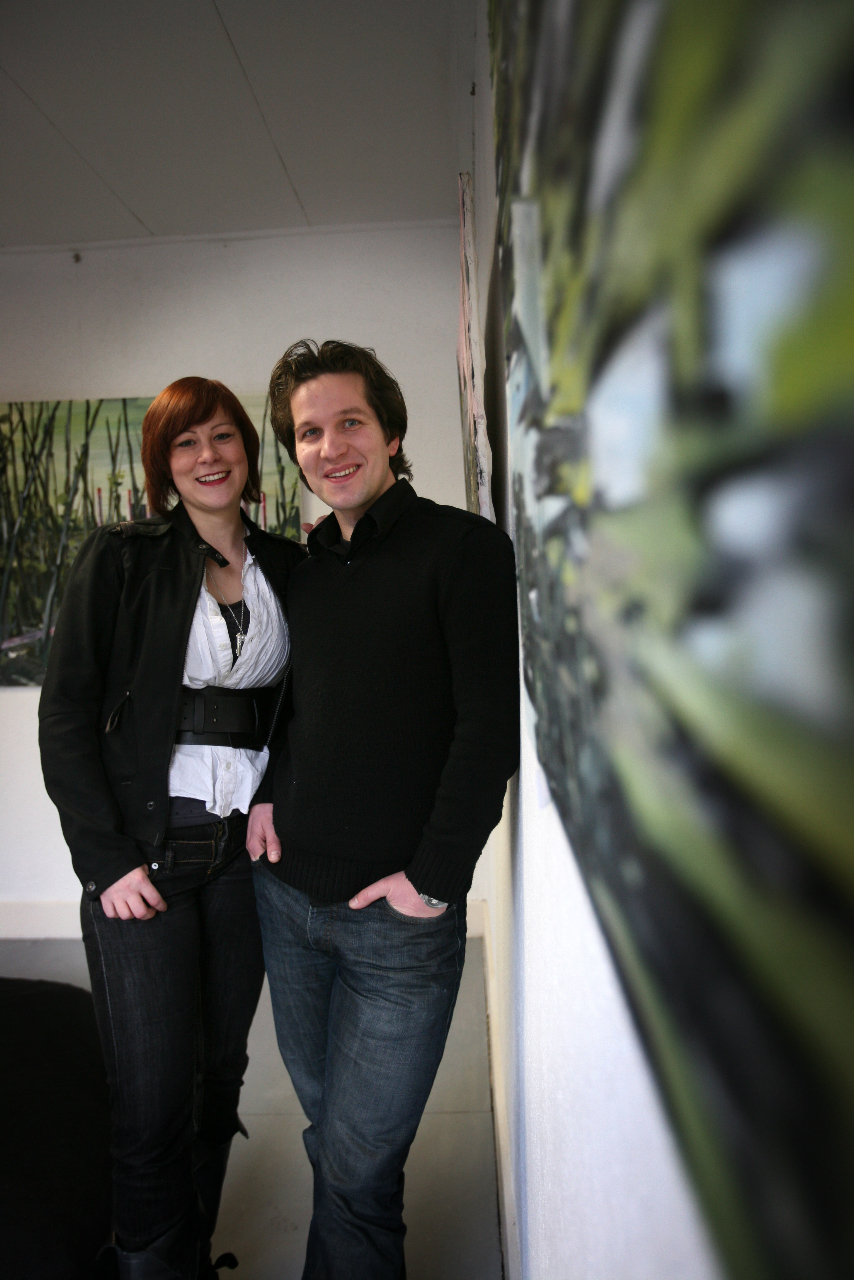
Carla and Paul in 2008.
How did you come into contact with the art world?
During and just after our student days, art became more and more important to us. After his studies, Paul lived with artists in a student house. The many conversations, studio visits and joint visits to exhibitions sparked his interest in art.
When we got into a relationship, we infected each other more and more with the art virus. We visited galleries, museums, art fairs and exhibitions. Together we embarked on a quest for that one piece of art that touches you and stays with you. The search for works of art also led to the idea of creating a platform for artists. This meant a career switch for us because we were both working in a completely different industry. Paul worked in youth care and education, while Carla – trained as a window dresser – worked as a key account manager for a company that developed display figures. There she also supervised the design process of new series of shop window figures.
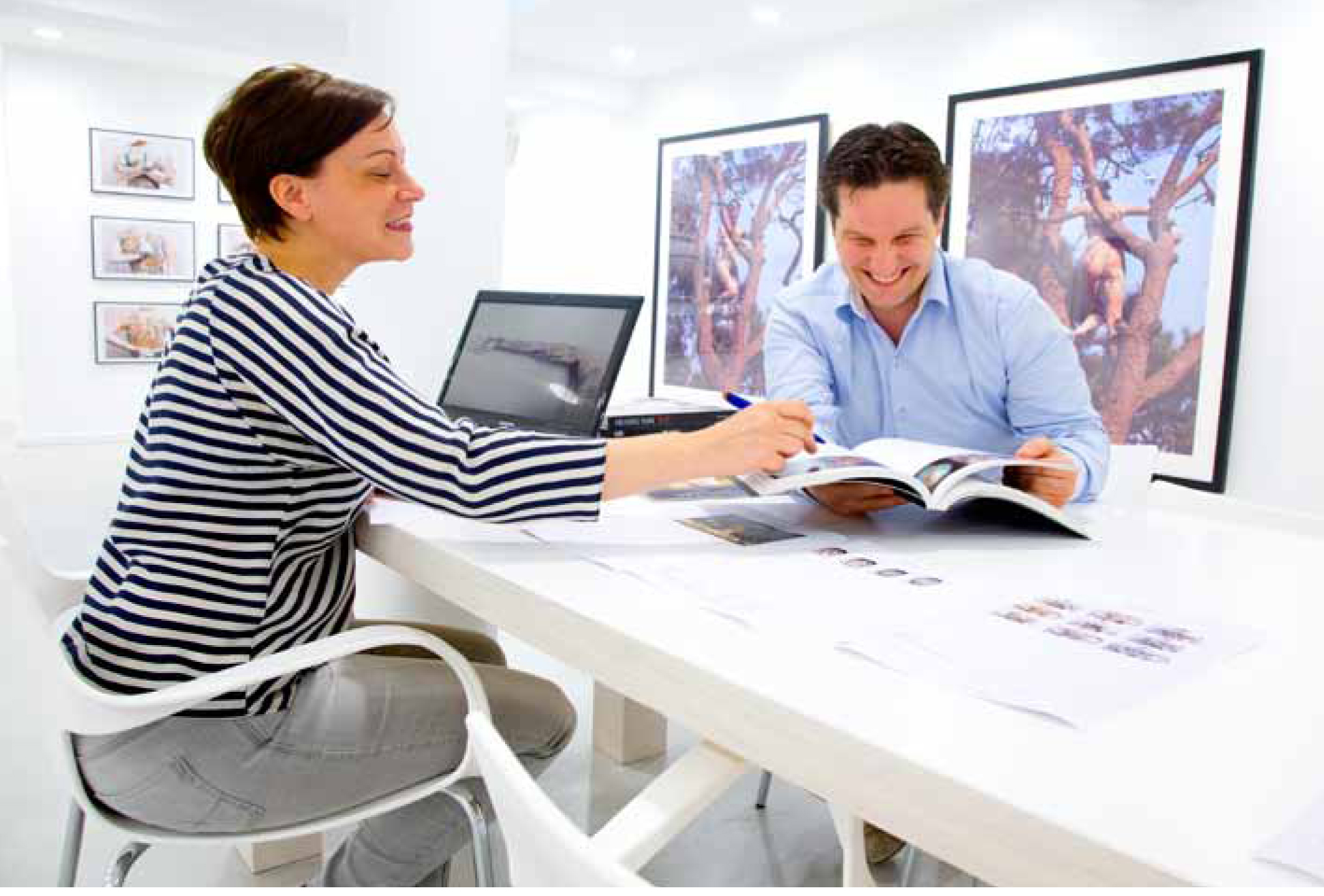
Carla and Paul in an exhibition by multimedia artist Huang Yan in 2013.
What was your first job in a gallery? Or did you immediately start a gallery yourself?
In 2007, we decided to start the gallery together; we were ages 28 and 30 at the time. With a starting budget of 10,000 euros, a former cafe was converted into a gallery. Our network consisted of artists and a handful of art lovers. Yet, we dared to trust our intuition and business instincts, and we were determined to start a gallery that would grow into a place where artists are supported in their development. Initially, with a focus on Germany, we soon understood that it was important to first build a good base in the Netherlands.
How would you describe your gallery’s profile?
The gallery is home to both internationally established artists and emerging talent. We consider it our priority to properly guide and assist artists in their artistic and business development. We also see it as our mission to make art accessible to everyone. We spread our love for art to a wide audience and are always open to collaborations. It is significant that the majority of the artists have been with us from the beginning.
What makes art interesting to us is that it is a form of expression for the artist. Artists do not tell their story in words, but through images. It's a very intuitive, universal language that speaks to people in a unique way. A work of art is always part of the visual process and the individual context of an artist. We show work that we ourselves feel the need to show and follow the artist in his or her process.
In addition to expressiveness, we value individuality, content, craftsmanship and an investigative attitude among artists. This is reflected in a very diverse palette of artists. One example is the work of Julie van der Vaart, who explores themes such as the subjectivity of time, the vastness of the cosmos, nature and death in her mysteriously captivating photographic works.
Other examples are the inquisitive pencil drawings by Alexandra Roozen. Every artist has his own place in the gallery. At first, there may not seem to be a common thread, but there is a poetic intensity that emanates from all the works, which connects the artists of the gallery on a deeper level.
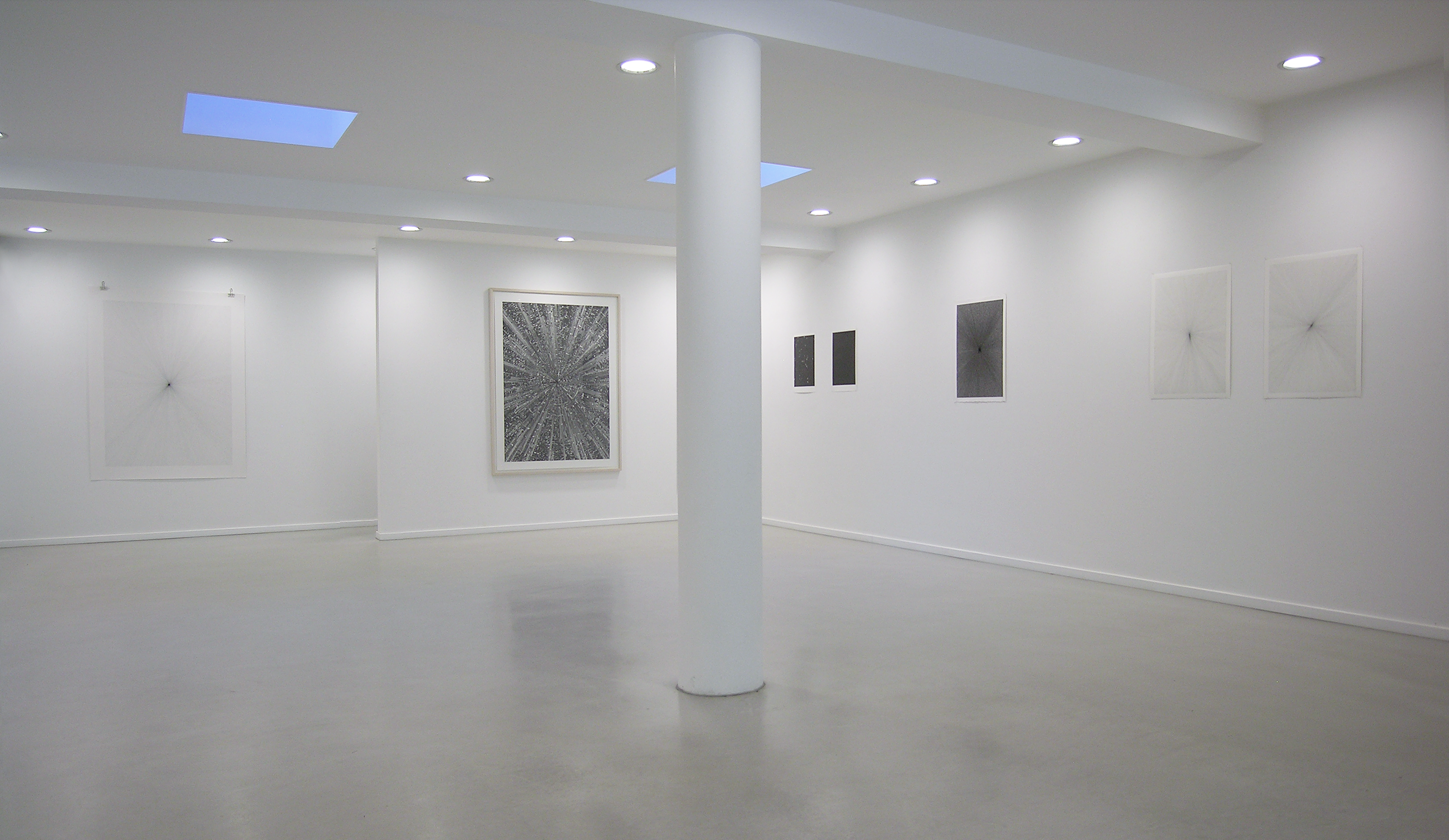
Solo exhibition by Alexandra Roozen in 2013.
What do you think is the best part of being a gallerist?
The gallery is a way of life for us. The pivotal role you hold, and that we can actually create value for the artist, is so satisfying. Supporting the artist on the one hand, but also the contacts with our relations. Both worlds, which are quite different from each other, appeal to us. We are located in Venlo, and in order to reduce the physical distance for many relations, we work a lot by appointment. It is a non-binding service that we show the artworks at your home. In addition, it is self-evident for us that we also deliver purchased works to your home and, if necessary, install them.
It is a privilege to be surrounded with art on a daily basis, artists and people who have an affinity with art. Art communicates and this leads to beautiful and fascinating conversations, whether these are content-related, art-historical or personal conversations, there is always that personal relationship. From 2013 we have both been working full time in the gallery. It's a cliché to say we've been chasing our dream, but it sure feels that way.
Which national / international galleries do you feel an affinity with?
Most galleries share the same drive to promote art. An indispensable quality to run a gallery at all. In addition, each gallery has its own DNA. Just like the human DNA, the DNA of the gallery is formed by countless 'building blocks': the artists, the programming, the relationships, the location and of course the gallerists themselves. In conversation with fellow gallerists, there is always a lot of recognition, but it is precisely this individuality that creates its own 'face'. It is this diversity that makes the gallery world so interesting. We have a good relationship with various colleagues and believe in collaboration. This is also the case with Contempo Gallery. For several years now we have been participating in Appèl Galeries (www.appel-galeries.nl), a collaboration of seven galleries (including Contempo Galerie) that aims to increase contact between the galleries, their relations and their artists. Together we will make a major exhibition in the Werkwarenhuis in ’s-Hertogenbosch, where the seven galleries present a selection of the visual art on offer in the south of the country and thus share our network.
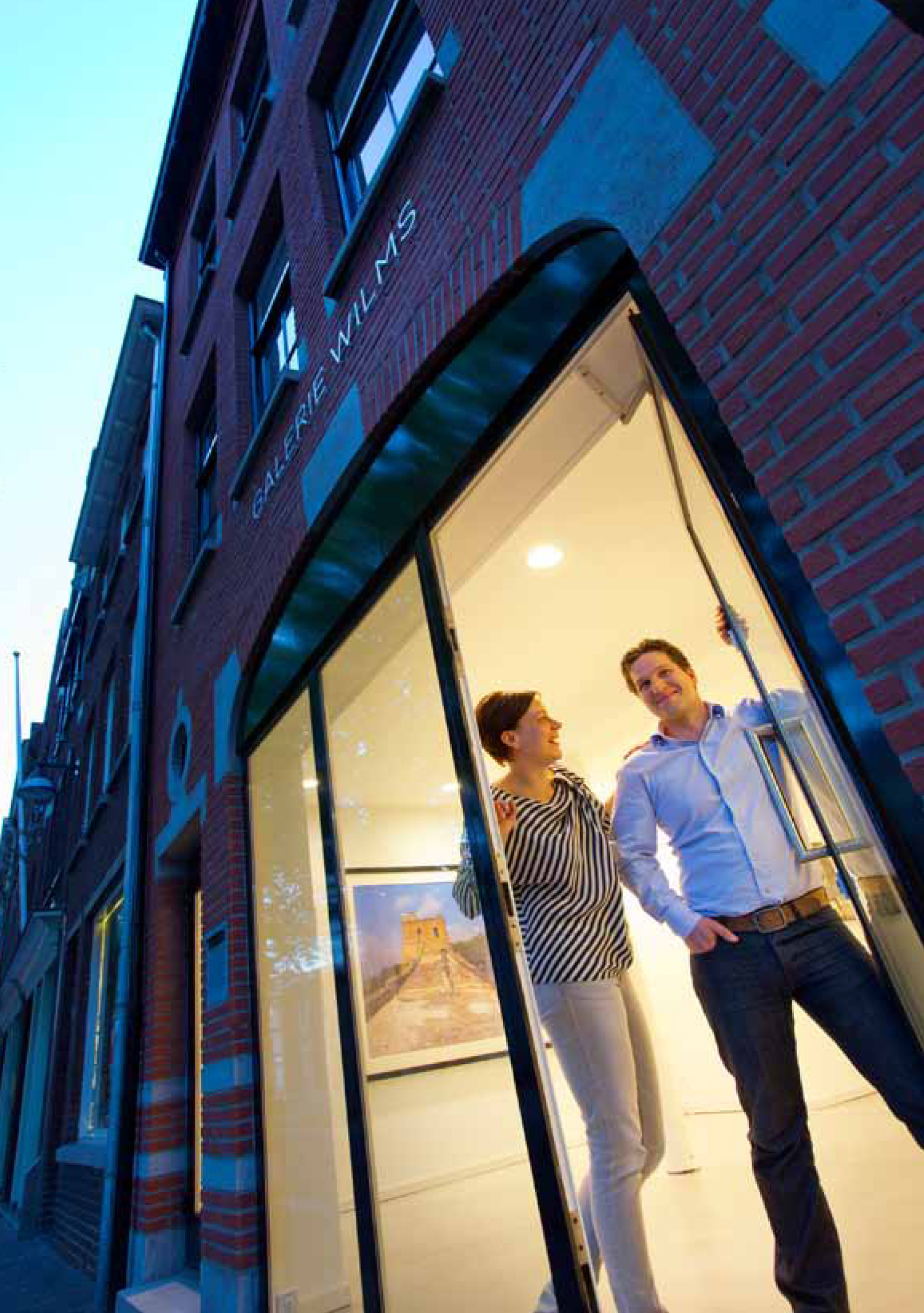
Carla and Paul in the gallery in 2013.
In an ideal world, which artist would you most like to represent?
There are always artists who have 'hero status' for us. How nice would it be to make an exhibition with that? But we know that a long-term partnership requires more. Mutual commitment from gallery and artist are essential. If rapid (sales) results are not forthcoming, this should not put pressure on the collaboration. We choose the work, we want to introduce people to the content and oeuvre of the artist.
We have represented a few artists from the very beginning of their careers. Think of Suzanne Jongmans, whom we show from 2008 onwards. The development of the oeuvre, which practically goes hand in hand with the attention it now receives internationally, is great to see. We act as her agent and arrange many other matters such as the publication of books, press requests and the (international) exhibitions. The intensive collaboration creates a close bond between us and the artists.
What has changed in the art world since you took your first steps?
Events in the world affect the world, and consequently the art world too. Whether it is about the art market or themes that artists address. Dynamics are an elixir of life, necessary to keep life interesting. Since the start of the gallery, digitization has taken off, an economic crisis has passed us by and we have become acquainted with the Covid-19 pandemic. To be able to cope with such developments, you need to be flexible and innovative.
In 2015, for example, we organized 'Amuse' for the first time, an exhibition concept for which we invited more than sixty artists to create small works for a maximum of €300. An amuse-bouche is a taster, intended to stimulate the taste buds. The concept is therefore aimed at getting acquainted with the diversity of art and making it accessible art. Artists and visitors were very enthusiastic about Amuse, and spontaneously grew into a biennial event. In 2019 we presented Amuse as a one-night event at PAN Amsterdam.
When the pandemic started, at the beginning of 2020, we went digital with Amuse! We still had a lot of physical amusements in the gallery and so at the beginning of 2020 we developed the website amuse.art at breakneck speed, perhaps also driven by the unrest. It offers the novice art buyer the opportunity to buy art for a relatively small amount. We also regularly see novice buyers 'further developing' into customers Galerie Wilms. It is also a great springboard for young artists who sometimes continue to be a permanent artist of Galerie Wilms. This was the case with Julie van der Vaart and Lisanne Hoogerwerf. The big challenge here is to continue to see the two concepts (Galerie Wilms and amuse.art) as independent companies.
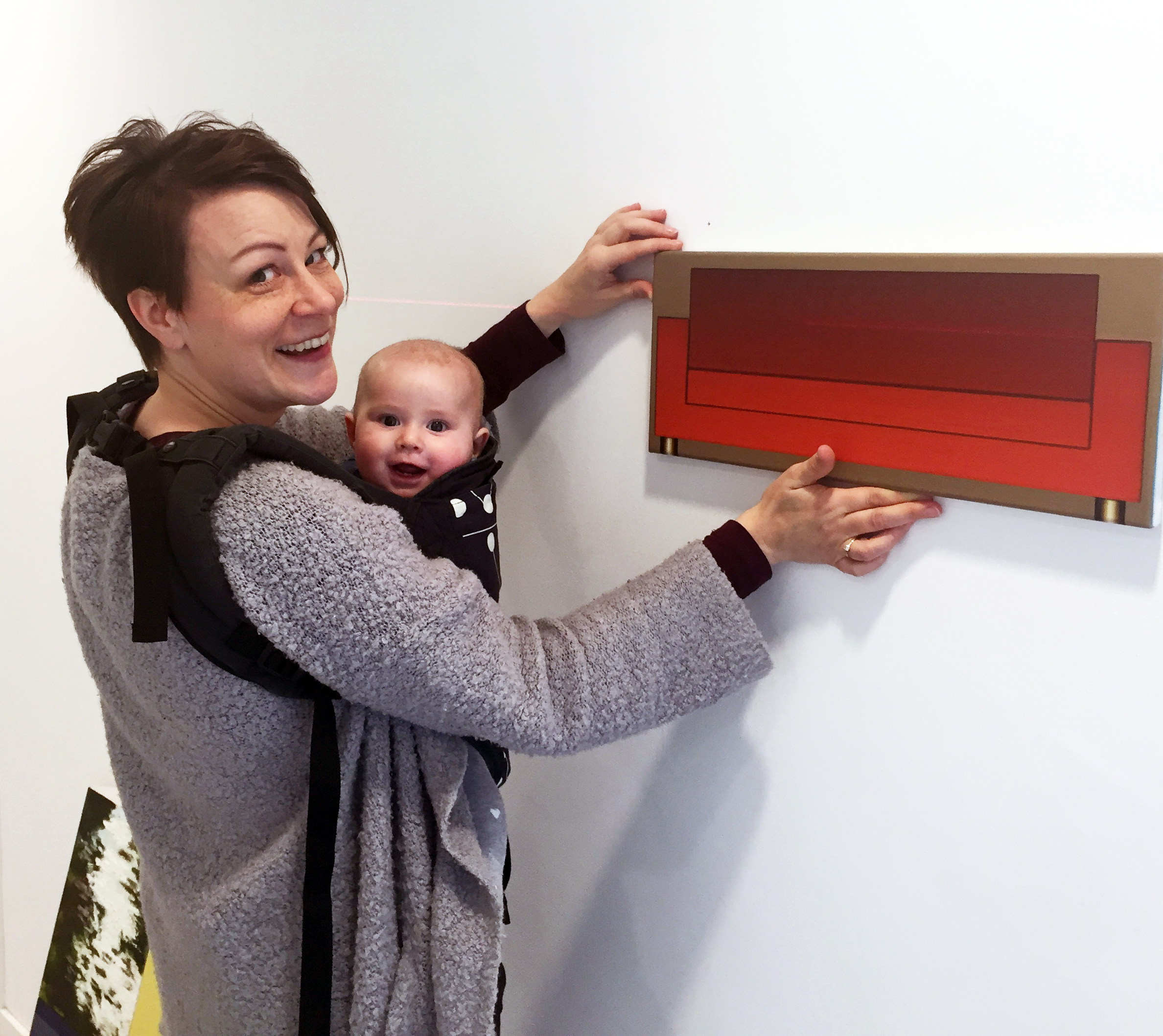
Installation of the exhibition of Frank Lenferink in 2016.
What / whose work do you collect yourself?
In the early days of the gallery it was not always financially possible to purchase art ourselves. Fortunately, that's a little easier now. We are regularly touched by a work of art and we can add it to our collection. By buying art at important moments you anchor your life in your collection. Each work in our collection represents a story, a feeling, a moment. The works tell the story of our life, as it were. A painting by Aaron van Erp was our first joint purchase. This work symbolizes the beginning of our 'art career', but also the friendship we have built with the artist himself. A photo of a young woman diagnosed with cancer, by photographer Jasper Groen, acts as a 'memento mori'. That may sound tough, but when you realize that you are mortal, you also realize that you should especially enjoy the beautiful moments in life.
Has the pandemic changed the way you see the artworld?
The pandemic was a time of contemplation, which made us stand still and reflect. Certainties suddenly turned out to be no longer so certain. Exhibitions were cancelled and art fairs were cancelled. Between the hard lockdowns it was possible to organize small-scale activities. We organized 'meet and greets' and 'private concerts' for our relations. Due to the small scale, explicit attention was paid to art and personal encounters. We now realize that it is precisely this that makes our profession interesting, and that we must no longer let it go. In addition, we are happy that large events can take place again. A well-organized art fair gives the visitor the opportunity to discover new galleries and artists.
Digitization has made a big leap, partly due to corona. Still, looking at art remains a matter of experience and seeing a work of art in real life is always better than from a screen.
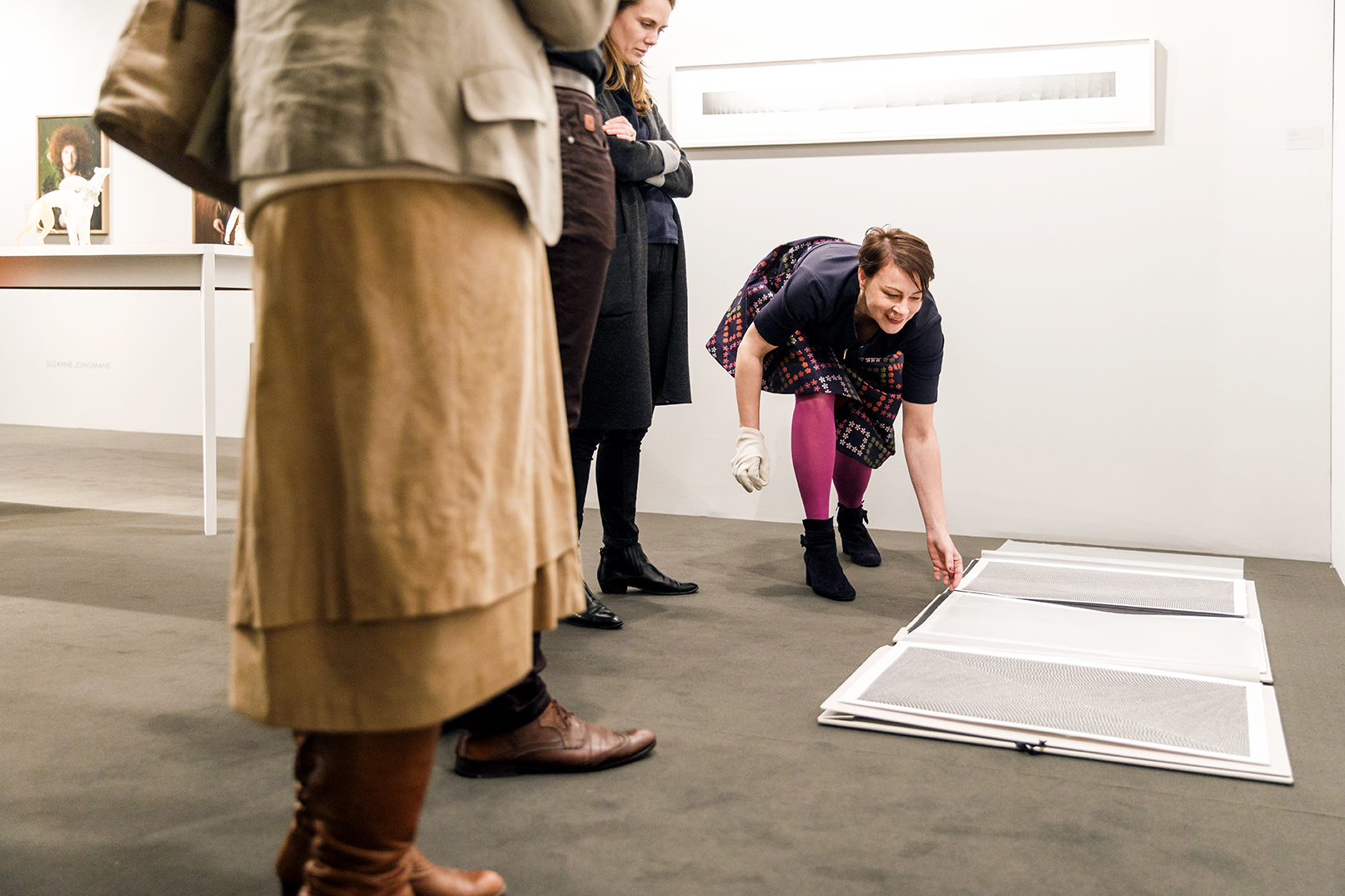
Carla during PAN Amsterdam 2017.
